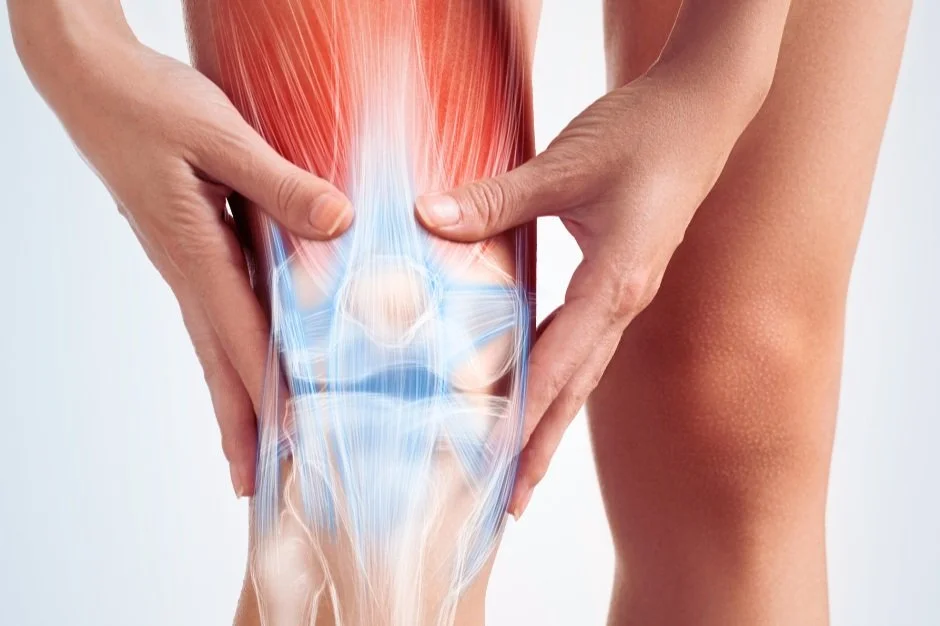Physical Therapy for Patellofemoral Pain Syndrome
Patellofemoral pain syndrome (PFPS) is the most common type of knee pain, causing pain around and under the kneecap. PFPS is prevalent among runners, cyclists, and young athletes as repetitive movements like running, jumping, or squatting can lead to chronic overuse of the knee and the development of PFPS. Physical therapy is highly effective in treating patellofemoral pain syndrome, using targeted exercise, stretching, and manual therapy to improve knee function and mobility and reduce pain.
What is Patellofemoral Pain Syndrome?
Patellofemoral pain syndrome, or PFPS, is the most common type of knee pain, causing pain around and under the kneecap. PFPS can affect anyone, but is particularly prevalent among runners, cyclists, hikers, young physically active adolescents, and office workers who engage in prolonged sitting. In fact, PFPS is the most common knee injury among runners. The prevalence of PFPS annually among the general population is 23%. Among adolescents, the prevalence is 29%, with female athletes being at particularly high risk.
Patellofemoral pain syndrome involves dysfunction at the patellofemoral joint, which consists of the kneecap (patella) and the femur bone. The patellofemoral joint is stabilized by the quadriceps, patellar tendon, ligaments, and hip musculature and plays a critical role in knee extension and deceleration.
Multiple factors can contribute to the development of PFPS:
Trauma to the knee joint
Overuse from repetitive movements that stress the knee, such as jumping, squatting, or running
Misalignment of the kneecap
Muscular imbalances in the hip, thigh, and knee muscles
Excessive loading on the knee due to overtraining or faulty running mechanics
Unique anatomy of the individual that places additional stress on the knee
Sudden changes in footwear or a sudden increase in activity level and training
Symptoms of PFPS include:
Dull aching pain around or behind the kneecap that begins gradually and occurs with activity
Pain that worsens after running, kneeling, squatting, or prolonged sitting with flexed knees
Sharp pain when using the knee
Knee crepitus, or grinding, crunching sounds within the knee during movement
Pain, friction, or popping when moving the knee upward or downward
Knee stiffness at rest
Physical Therapy for Patellofemoral Pain Syndrome
Physical therapy is highly effective in treating patellofemoral pain syndrome, using targeted exercise, stretching, and manual therapy to improve knee function and mobility and reduce pain. The aim of a PFPS rehabilitation program is to improve the range of motion of the IT band, hip flexor muscles, and quadriceps; strengthen core muscles, quadriceps, hip abductor and extensor muscles, and hamstrings; reduce pain; and improve the function, strength, endurance, and mobility of the knee.
Physical therapy treatment for PFPS can include:
Targeted strengthening exercises: Research has found that targeted strengthening of the thigh, hip, gluteal, and core muscles are essential to restore function in the knee and reduce strain on the knee by strengthening the surrounding and supporting musculature.
Quadriceps/Hamstrings/IT Band: Strengthening of the quadriceps has been a cornerstone of PFPS exercise management. However, it is essential to strengthen all quadriceps muscles as well as the hamstrings and IT band to improve function and mobility in the knee after PFPS.
Hip and gluteal musculature: Strengthening the hip external rotator and abductor muscles is effective in reducing pain, improving patellar tracking and knee function, and correcting muscular imbalances in the leg that place stress on the knee. Strengthening the gluteus medius muscles on the sides of the hips helps to stabilize the hip and knee joints.
Core: Strengthening the core and trunk muscles provides a strong base for body movements and can help take pressure off the knee joint.
Stretching: Stretching of tight hip, hamstring, calf, quadriceps, and IT band muscles can relieve pain and help restore proper range of motion in the lower extremity muscles.
Gait re-training and running mechanics instruction: Gait training can address any compensatory movement patterns that are contributing to knee pain and retrain for proper biomechanics when walking or running to lessen stress on the knee. Running mechanic instruction is essential as many with PFPS run with altered mechanics like excessive hip adduction and internal rotation which contribute to the development of PFPS.
Manual therapy: soft tissue and joint mobilizations of the knee joint can be effective in reducing pain and improving function in those with PFPS.
Taping or bracing: The use of taping or a knee brace can provide short-term pain relief and temporarily support proper alignment of the kneecap during movement.
Foot orthoses: Foot orthoses can support proper leg and kneecap alignment and correct an individual’s gait to reduce stress on the knee. Foot orthoses can correct over-pronation in the foot and improve excessive internal rotation in the affected lower extremity.
Patient education: The therapist first will instruct the individual on ways to modify activities that aggravate the knee. As rehabilitation progresses, the therapist provides education on cross-training, running form, load management, and progression of training exercises to avoid overloading the knee too quickly.
Numerous research studies reveal that physical therapy is a highly effective treatment option for PFPS. One study that involved PFPS patients engaging in a 12-week home exercise program noted patients experienced improvements in pain and function, demonstrated by a 27-point improvement in a pain rating scale used in the study. A review of PFPS physical therapy studies noted that the most effective therapeutic exercise programs for patellofemoral pain syndrome with regard to pain relief and functional improvement include proprioceptive neuromuscular facilitation stretching and strengthening exercises for the hip external rotator and abductor muscles and knee extensor muscles. Studies that included exercises for the hip external rotators and abductor muscles reported that the combination of hip external rotator, abductor, and quadriceps strengthening reported lower values for pain level and improved function earlier than quadriceps strengthening alone.
Patellofemoral pain syndrome can limit your daily activities and your ability to fully engage in your sport. Don’t wait to treat PFPS. Work with your physical therapist to address your pain and return you to your activities with improved strength and mobility!
